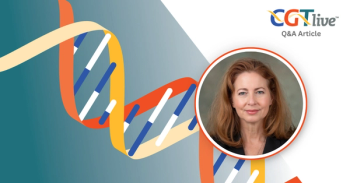
Molecular Analysis Elucidates Cell Therapy Destiny and Distribution
AVROBIO presented data on their analytical pipeline and exploratory studies of molecular follow-up from their lentiviral cell therapy products.
AVROBIO is improving on molecular follow-up of lentiviral cell therapies in patients with lysosomal disease. The company presented data on the analytical pipeline they have developed for this purpose as well as exploratory studies using the analysis at the
Mariana Loperfido, PhD, senior scientist, AVROBIO, presented data on the exploratory studies conducted and Luca Biasco, PhD, director, research and development, AVROBIO, and senior research associate, University College of London, presented data on the company’s analytical pipeline. Loperfido and Biasco were involved in both studies.
"We want to provide new insight on the composition of hematopoietic stem cells in lysosomal diseases such as Gaucher and cystinosis, of which little is known before and after lentiviral gene therapy. We want also to monitor the safety of our patients during follow-up,” Loperfido said during her presentation.1 “In the industry, the standard approach for molecular safety studies is based on the vector copy number evaluation and integration site analysis performed on white blood cells. Should an insertion or adverse event (AE) arise, this approach provides limited information on the dynamics of lentiviral gene therapy... Therefore, we have developed a high-resolution approach for molecular safety studies based on the cell sorting of 15 bone marrow subpopulations in multiple stages of differentiation, and 7 peripheral blood subpopulations of mature cells.”
READ MORE:
Loperfido, Biasco, and colleagues conducted high-resolution cellular and molecular studies and bone marrow and peripheral blood before and after lentiviral cell therapy treatment as part of the analytical pipeline. They analyzed the subpopulations of bone marrow and peripheral blood cells via digital PCR-vector copy number and integration site analysis, as well as clonal tracking data to elucidate the dynamics and destiny of cell populations after gene therapy.
Loperfido discussed results seen in a patient with Gaucher disease, including a finding that vector copy number was high and stable in multiple differentiated cells in bone marrow analysis. Integration site analysis revealed a high diversity of integration sites in peripheral blood subpopulations and single-cell RNA sequencing also further revealed CD34+ cell states in patient samples. She discussed the possibility of using integration site sharing as a surrogate biomarker of progenitor activity and shared that the studies will soon expand analyses to other patients with Gaucher disease to further analyze and compare cellular findings.
Biasco went into more detail on the analyses performed in the analytical pipeline and the importance of tracking cell destinies, given the variety of CD34+ progenitor cells. He discussed how their approach, particularly single-cell RNA sequencing, improves on the limitations of flow cytometry and whole blood cell analysis.
“As you would study the pharmacokinetics of chemical drugs, you need to also monitor the biodistribution and dynamics of these cells, with the added complexity that these cells are a much more complicated vehicle for therapies. That's why there is a stronger need to understand, more in detail, what happens to the cells after they're infused back to the patient, not only in the short term, but also long term. That is also the reason why we are implementing new types of monitoring cells and gene therapy products that we're using at AVROBIO,” Biasco told GeneTherapyLive in an interview.
REFERENCES
1. Loperfido M, Baricordi C, Yan A, et al. High-resolution cellular and molecular follow up of lysosomal disease patients treated with hematopoietic stem cell lentiviral gene therapy. Presented at: 18th Annual WORLDSymposium. February 7-11, 2022; San Diego, CA. Poster #178
2. Biasco L, Baricordi C, Loperfido M, et al. High throughput monitoring of safety, potency and stability of gene therapy cell products in lysosomal disease patients. Presented at: 18th Annual WORLDSymposium. February 7-11, 2022; San Diego, CA. Poster #26
Newsletter
Stay at the forefront of cutting-edge science with CGT—your direct line to expert insights, breakthrough data, and real-time coverage of the latest advancements in cell and gene therapy.


















































